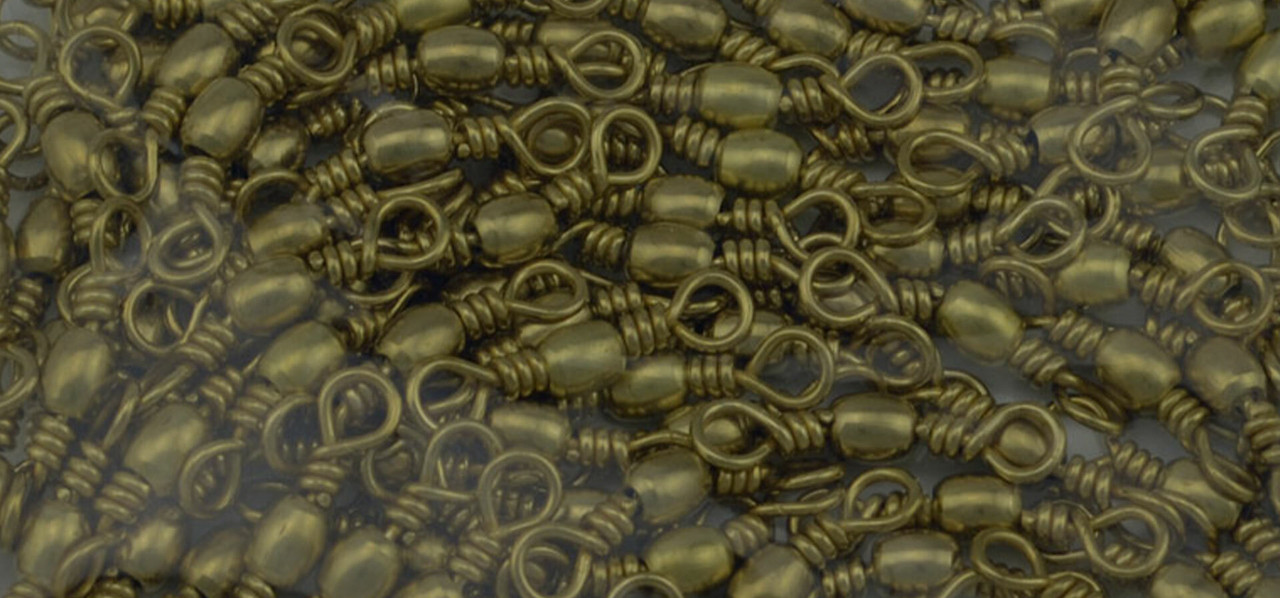A Tackle Shop Guide to Fishing Swivels
A fishing swivel might be a common basic gear item in your tackle box, but choosing the right one is critical for preventing line twists and ensuring your rig performs correctly. With different styles like brass barrel, crane, snap, and ball bearing available, it's easy to feel overwhelmed when choosing one suitable for your purpose. This guide will break down what you really need to know to choose the perfect swivel for your fishing style.
A Note From Our Local Experts
"A common issue I see for anglers is that they struggle with line twist. Especially when using monofilament and spinning lures like metal slugs for Kingfish and Australian Salmon.
While modern braided lines handle twist much better these days compared with old-school mono lines because they have less memory, any line will eventually get twisted up after a long session.
The best and most direct way to stop that twist from reaching your reel and causing tangles is to add a quality swivel to your rig. For the small cost, it's a critical piece of gear that can keep your line in better condition and you fishing for longer."
- Ben Czulowski, Owner, Fishing Tackle Shop (Ocean Storm) | Experienced in selling swivels for 20+ Years.
A Guide to Swivel Types
The choice between swivel styles comes down to matching the design to your specific fishing technique and budget.
✔
Barrel Swivels: This is the classic, most popular choice. Made from brass, they are strong, reliable, and incredibly affordable, making them perfect for the vast majority of general-purpose bait fishing rigs.
✔
Crane Swivels: A crane swivel is a step up in performance from a standard barrel. They are more compact and are designed to handle heavier loads with greater efficiency, making them an excellent choice for anglers targeting larger fish. They are often finished in black for a more stealthy presentation.
✔
Ball Bearing Swivels: This is the high-performance option. A ball bearing swivel contains tiny, free-spinning ball bearings that allow it to rotate with almost no friction, even under extreme load. This makes them the non-negotiable choice for any high-speed technique like trolling or casting metal spinners.
✔
Three-Way Swivels: Also known as a crossline swivel, this is the foundation of a classic paternoster or dropper rig. The third eye allows you to attach a separate line for your sinker, keeping your bait presented perfectly off the bottom. It's an essential tool for targeting reef fish or whiting over sand.
Pro-Tips for Choosing and Using Swivels
- Sizing Your Swivel Correctly: Always choose a swivel with a breaking strain that is equal to or greater than the breaking strain of your leader line. If you're using a 40lb leader, your swivel must be rated to at least 40lb to ensure it is not the weak point in your system.
- When to Go Without: For some finesse lure fishing, especially with light lines for bream or bass, many experienced anglers prefer to tie their leader directly to the lure with a small loop knot. In this scenario, a swivel can add unnecessary weight and bulk, which can impede the lure's subtle action.
- Use a Reliable Knot: A strong knot is critical. The Uni Knot is a fantastic and easy-to-learn all-rounder that provides a secure connection for most situations.
Frequently Asked Questions
Why do I need a fishing swivel?
A swivel's main job is to stop your fishing line from twisting. When you retrieve a lure that spins (like a metal lure) or use a bait that helicopters on the drop, it can put hundreds of twists in your line. This weakens the line and causes frustrating tangles. A swivel allows the lure or bait to rotate freely without passing that twist up to your main line.
Why are ball bearing swivels the only choice for game fishing?
It comes down to performance under extreme load. When you're trolling a big lure for marlin or tuna at 8 knots, a standard barrel swivel can't spin fast enough to keep up, and line twist becomes a major issue. A ball bearing swivel, however, spins effortlessly even under the immense pressure of a heavy lure and a tight drag, ensuring your line stays perfectly straight. It's an essential piece of equipment for any serious game fishing setup.
Does the colour of my swivel matter? Should I use black or brass?
This is an excellent and often-debated question. For most general-purpose fishing, the colour makes little difference. However, for anglers targeting extremely wary fish in clear, shallow water (like fussy bream or trout), a less conspicuous black or gunmetal-finished crane swivel is the superior choice as it is less likely to flash and spook a fish. For offshore trolling, a shiny brass swivel is perfectly fine.
Where in my rig should I tie the swivel?
The swivel acts as the connection point between your main line and your leader. You should tie one end of the swivel to the end of your main line (usually braid) and the other end to the start of your leader (usually monofilament or fluorocarbon). This isolates any twist to just the leader section.



